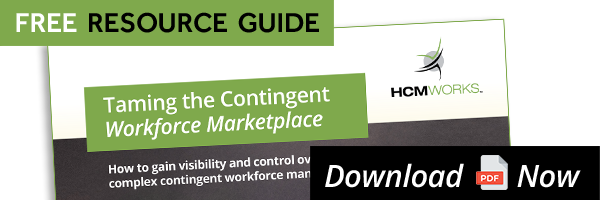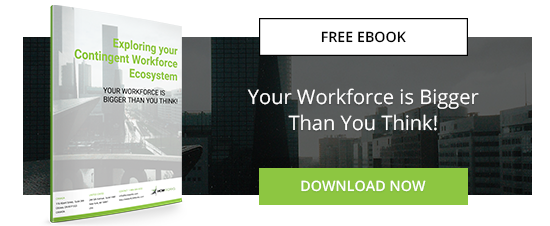Hiring contingent workers from a staffing agency can help your company save time, find the best talent, and reduce costs. The staffing agency recruits candidates and provides you with options for new temporary hires that match the qualifications, skills, and experience that you’re seeking for any given project. Hiring through a staffing agency can be highly valuable, but it comes at a price. You must pay the firm for its services on top of paying for the worker’s services.
The cost of hiring contingent workers through a staffing agency will be higher than the cost of you sourcing the talent on your own. Though prices will vary depending on the firm and the talent you’re looking for, the concept of how the prices are determined is the same across the industry. It consists of pay rate, markup, and bill rate. Essentially, the pay rate plus the markup equals the bill rate.
Here’s what you need to know about the three interrelated yet often competing aspects of contingent labor spend.
Pay Rate
This rate is the hourly amount the staffing agency is paying the contingent worker for the services he or she will be providing to your company. It’s the largest aspect of the bill rate. It also plays a significant role in the quality of the talent you’ll ultimately receive, the retention rate, and the time it will take to fill a position. Generally, the higher this rate is, the more qualified the worker will be, the higher the likelihood the worker will be happy and stay at the job, and the quicker you’ll be able to find a suitable candidate to hire. Changes to this rate will affect the talent.
Markup
When you hire through a staffing agency, you not only spend money on the pay rate but also on the firm’s markup. This is a percentage applied on top of the pay rate and it is being provided to the staffing agency. It typically includes the pass-through costs that adjust over the contract, such as employment taxes, the fixed pass-through costs that are agreed upon ahead of time, such as workers’ compensation and insurance, as well as the gross profit for the staffing agency.
Here, you’ll see great variation, which is based on market demand, assignment duration, buyer’s knowledge, type of workers and skill sets, business volumes and more. You’ll usually see a markup rate from as low as twenty percent but it can go as high as 50 percent or more. Changes to this cost are commonplace but should only be based on current economics.
Bill Rate
Finally, the bill rate is the combination of the two above components. This is the full amount that you’ll ultimately end up paying for the staffing agency’s services and the contingent worker’s services.
How to Reduce Contingent Labor Spend
Many business owners don’t understand exactly what they’re paying for when they engage the services of a staffing agency. However, staffing agency rates don’t have to be a mystery. Agencies will always try to have the lowest pay rate and the highest bill rate so they can make a higher profit with the markup. By understanding the three different components of this contingent labor spend, you can better control your costs and make informed hiring decisions.
Before contacting a staffing agency, understand the cost of the type of worker you’re looking for and provide a proposed bill rate to the firm to ensure you’re spending an appropriate amount for the talent you’ll be receiving. Take a closer look at markups before you get into a relationship with a specific staffing agency—get quotes and shop around before signing a contract.




